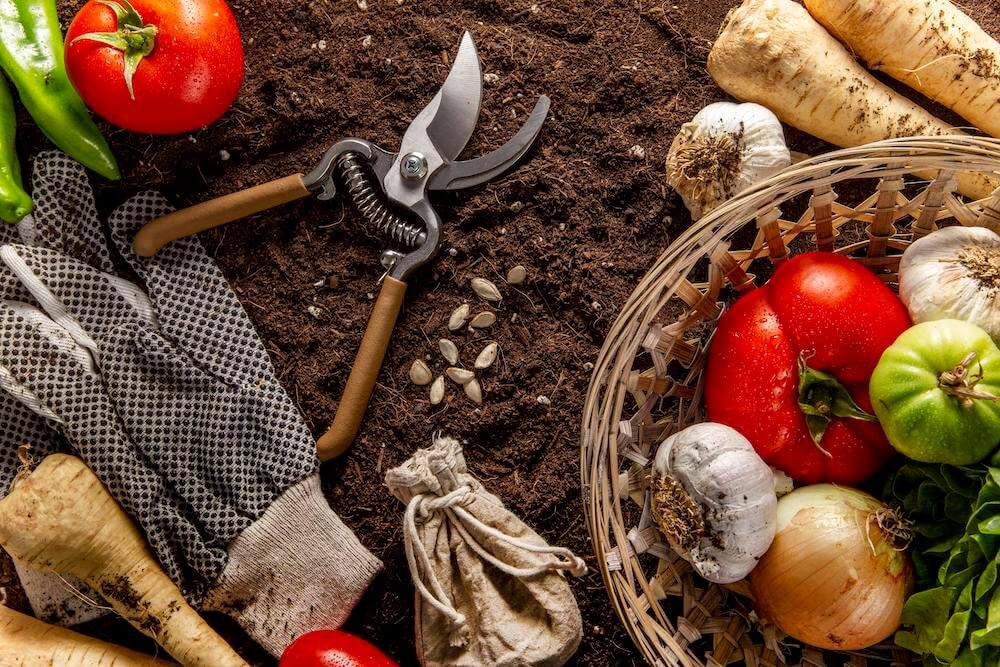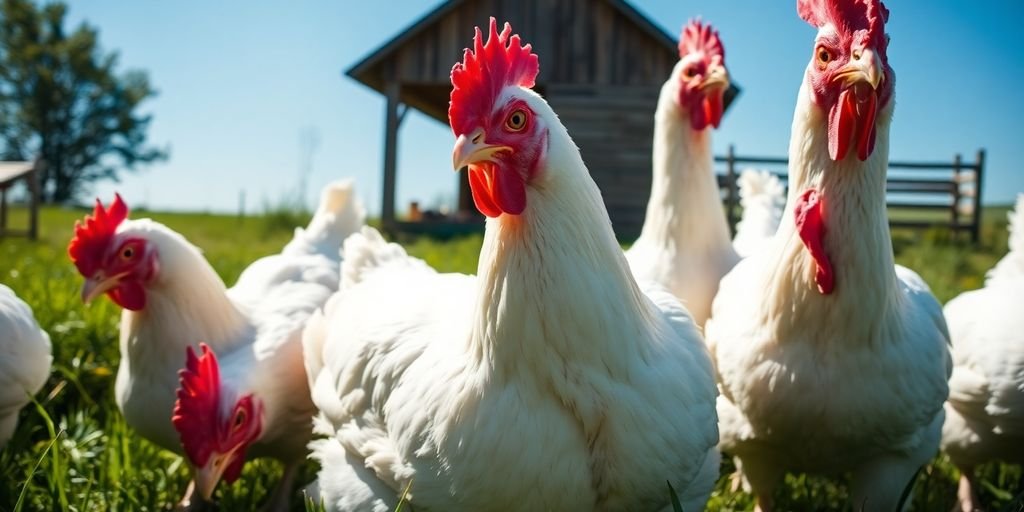Your Essential Guide to Choosing the Perfect Beekeeping Starter Kit
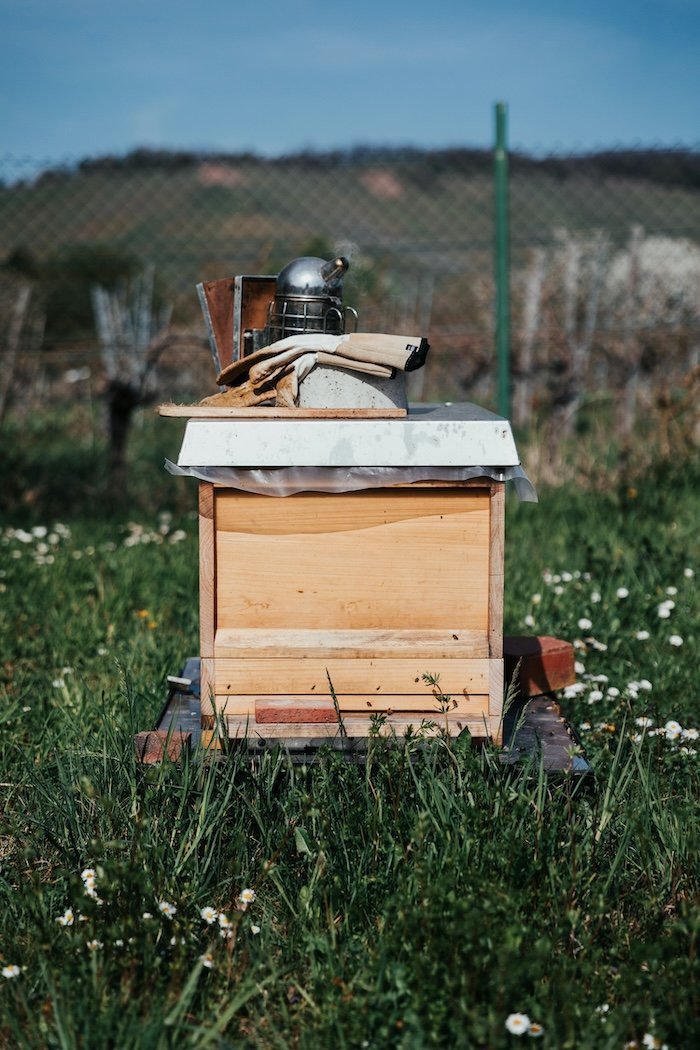
So, you’re thinking about getting into beekeeping? That’s awesome! It’s a really cool hobby, but it can feel a bit much when you’re just starting out. Like, where do you even begin? That’s where a good beekeeping starter kit comes in handy. It’s basically your shortcut to getting everything you need without feeling totally lost. This guide is all about helping you pick the best beekeeping starter kit so you can get your bee adventure going without a hitch.
Key Takeaways
- A beekeeping starter kit makes getting into beekeeping much easier by giving you all the basic stuff you need right away.
- Look for kits that have the hive, tools, and protective gear. These are the main things you’ll use.
- Think about what kind of hive works best for you and your local area before you buy. Langstroth hives are popular, but there are other options too.
- Don’t just grab the cheapest kit. Make sure it’s good quality and has everything you really need.
- Beekeeping is a learning process, so be patient and enjoy watching your bees grow!
Why a Beekeeping Starter Kit is Your Best Friend
Starting beekeeping can feel like jumping into the unknown. There’s so much to learn, and it’s easy to feel overwhelmed. That’s where a beekeeping starter kit becomes your best friend. It’s like having an experienced beekeeper guiding you every step of the way. Let’s explore why these kits are so helpful.
The Convenience Factor
A beekeeping starter kit puts everything you need in one place. No more running around trying to find the right tools or wondering if you’ve forgotten something. It’s all there, ready to go. This saves time and reduces stress, letting us focus on learning about the bees themselves. It’s a huge help when we’re just starting out and trying to get our bearings. For example, a traditional bee hive starter kit includes a Langstroth hive that promotes intuitive assembly and immediate hands-on experience.
Simplifying Your Beekeeping Journey
Beekeeping has a lot of moving parts. From understanding bee behavior to managing the hive, there’s a lot to take in. A starter kit simplifies things by providing clear instructions and the right equipment. This allows us to learn at our own pace without feeling lost or confused. It’s like having a simplified roadmap that guides us through the process, making it much less intimidating.
Avoiding Common Beginner Blunders
We’ve all been there – making mistakes when we’re learning something new. With beekeeping, mistakes can be costly, both for our wallets and for the bees. A starter kit helps us avoid common beginner blunders by providing the right tools and guidance. This ensures we set up the hive correctly, handle the bees safely, and manage the colony effectively. It’s like having a safety net that prevents us from making easily avoidable errors.
A good starter kit can really set us up for success. It’s not just about having the right equipment; it’s about having the confidence and knowledge to use it effectively. This can make all the difference in our beekeeping journey.
What’s Inside Your Beekeeping Starter Kit?
Okay, so you’re thinking about getting a beekeeping starter kit? Awesome! But what exactly are you getting yourself into? Let’s break down what you can typically expect to find inside one of these kits. It’s more than just a box, trust us.
The Hive Body Explained
Think of the hive body as the bees’ apartment building. It’s where they live, work, and raise their families. A standard hive body usually includes a bottom board, hive boxes (also called supers), frames, an inner cover, and a top cover. The bottom board is the floor, the hive boxes are the living spaces, the frames hold the honeycomb, the inner cover provides insulation and bee space, and the top cover protects everything from the elements. These are often made of wood, and provide a roomy, well-ventilated space where bees can build their honeycomb, raise their young, and store their honey.
Essential Tools You’ll Need
Beyond the hive itself, you’ll need some tools to manage your colony. These aren’t your everyday hammer and nails! We’re talking about specialized equipment designed to make beekeeping easier and safer for both you and the bees. Here’s a quick rundown:
- Hive tool: This is like a multi-tool for beekeepers. You’ll use it to pry apart hive bodies and frames that the bees have glued together with propolis.
- Bee brush: A soft-bristled brush for gently moving bees off frames without harming them.
- Smoker: This is a classic beekeeping tool. Smoke calms the bees, making inspections less stressful for everyone involved. It’s important to use it responsibly.
Protective Gear for Safe Beekeeping
Let’s be real: bees sting. While some beekeepers can handle stings, it’s always best to protect yourself, especially when you’re just starting out. Protective gear is a must-have in any beekeeping starter kit. Here’s what you’ll typically find:
- Bee suit or jacket: A full suit offers the most protection, but a jacket is a good option for warmer days.
- Veil: This protects your face and neck from stings. Some suits have built-in veils.
- Gloves: Beekeeping gloves protect your hands, which are often the target of stings. Make sure they fit well so you can still manipulate the frames and tools. Defensive clothing, such as suits, veils, and gloves, significantly reduces the risk of being stung.
Getting a good beekeeping starter kit is a great way to get into beekeeping. It’s important to check the kit’s contents to make sure it includes all the necessary tools and equipment for setting up and maintaining a beehive. Beginner beekeeping kits are designed for those who are new to beekeeping and want to start with the essential tools and equipment.
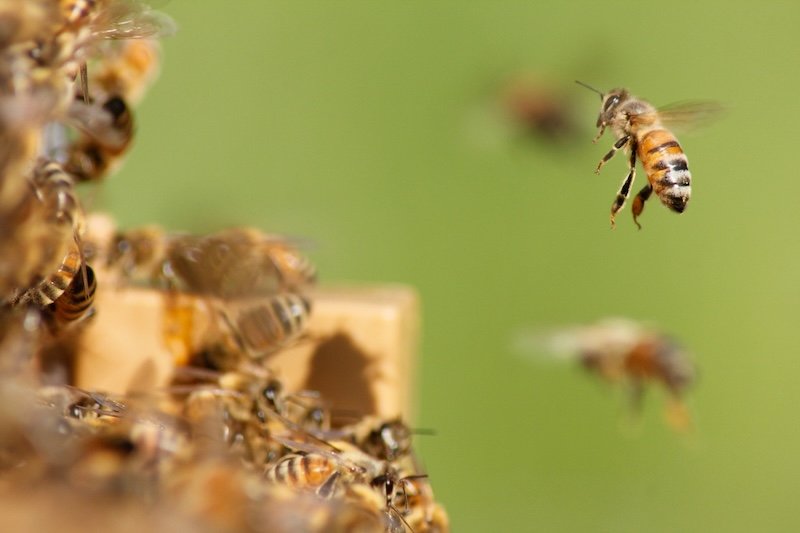
Choosing the Right Hive Type for Your Beekeeping Starter Kit
Choosing the right hive type is a big decision when you’re starting out. It’s like picking the right house for your bees, and there are a few popular options to consider. We’ll walk you through the most common types and what makes them unique.
Langstroth Hives: The Popular Choice
Langstroth hives are probably what you picture when you think of beehives. They’re super common and widely used by beekeepers everywhere. The design involves stackable boxes, which makes it easy to expand the hive as your colony grows. This modularity is a big plus, especially when you’re learning the ropes. They are easy to inspect and manage, which is why many beginners start with them. Langstroth hives are a great option if you want a more traditional beekeeping experience.
Top-Bar Hives: A Different Approach
Top-bar hives offer a more natural approach to beekeeping. Instead of stacked boxes, they use a single, trough-like structure with bars across the top where bees build their comb. This design minimizes disturbance to the colony during inspections, which some beekeepers prefer. It’s a less intrusive way to keep bees, and many find it more in tune with the bees’ natural behavior. Top-bar hives can be a good fit if you’re interested in a more hands-off approach.
Considering Your Climate and Local Bees
Your local climate and bee species play a big role in which hive type will work best for you. Some hives are better suited to certain climates than others. For example, in colder regions, you might want a hive that provides better insulation. Also, consider the type of bees that are common in your area. Some bees might adapt better to one hive type over another. It’s always a good idea to talk to local beekeepers or your local beekeeping association to get their insights. They can offer advice based on their experience with the local environment and bee populations.
Choosing the right hive type is a big decision, and it’s worth doing your research. Think about your beekeeping goals, your local climate, and the type of bees you’ll be working with. With a little planning, you can find the perfect hive for your needs and set yourself up for a successful beekeeping journey.
Top-Rated Beekeeping Starter Kits on the Market
We’ve all been there, staring at endless options, wondering which beekeeping starter kit is actually worth the money. It can feel overwhelming, but don’t worry, we’re here to help you sort through the buzz.
Best Overall Kits for Newbies
When you’re just starting out, you want a kit that sets you up for success without requiring a PhD in beekeeping. These kits generally include everything you need to get your first colony going, from the hive itself to essential tools and protective gear. Think of them as your all-in-one beekeeping solution. For example, the Flow Hive beekeeping starter kit is a great option for beginners.
- A complete hive body (usually Langstroth style).
- Protective gear (suit, gloves, veil).
- Basic tools (hive tool, smoker).
Budget-Friendly Beekeeping Starter Kits
Beekeeping doesn’t have to break the bank! There are plenty of affordable kits that still provide a solid foundation for your beekeeping journey. These kits might require a little more DIY or sourcing of additional equipment, but they’re a great way to get started without a huge initial investment. Just remember to check online reviews from other beekeepers to get an idea of the kit’s performance and durability.
A budget kit might mean assembling everything yourself, which can be a great learning experience. It also allows you to upgrade components as you go, tailoring your setup to your specific needs and preferences.
What Makes a Kit Stand Out
Not all kits are created equal. Some go above and beyond in terms of quality, features, or customer support. Here are a few things that make a beekeeping starter kit truly stand out:
- High-Quality Materials: Durable wood, well-constructed frames, and sturdy protective gear are essential for long-term success.
- Comprehensive Instructions: Clear, easy-to-follow instructions are a must, especially for beginners. Look for kits that include detailed guides or even video tutorials.
- Excellent Customer Support: A responsive and helpful customer support team can be a lifesaver when you have questions or run into problems. Don’t underestimate the value of good customer service.
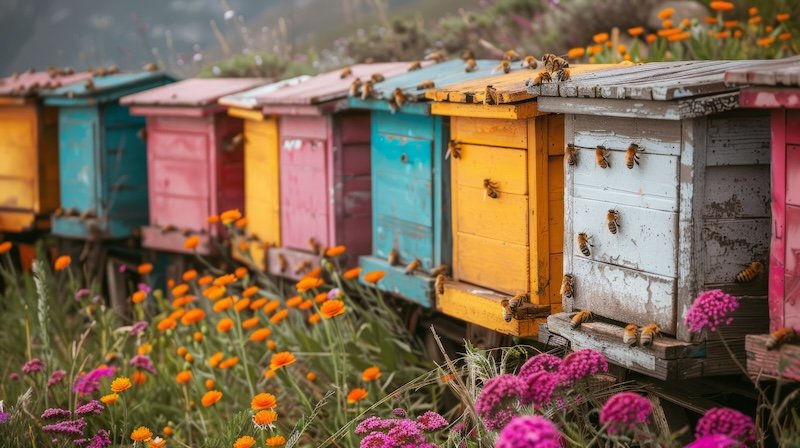
Factors to Consider Before Buying Your Beekeeping Starter Kit
We’re super excited you’re thinking about getting into beekeeping! Before you jump in and buy that first beekeeping starter kit, let’s chat about some important things to keep in mind. It’s easy to get caught up in the excitement, but a little planning goes a long way to making sure your beekeeping adventure is a sweet success. We’ve learned a lot along the way, and we want to share some tips to help you make the best choice.
Setting Your Budget Wisely
Okay, let’s talk money. Your budget is a big deal when choosing a beekeeping starter kit. It’s tempting to go for the cheapest option, but think long-term. A super cheap kit might mean lower quality stuff that you’ll have to replace sooner rather than later. That initial savings? Gone!
Here’s what we recommend considering:
- Quality versus Price: Sometimes spending a bit more upfront gets you better materials that last longer. Trust us, it’s worth it.
- Total Cost: Don’t forget about the extras! You’ll need maintenance tools, protective gear, and to think about the ongoing costs of keeping your bees happy and healthy.
- Hidden Costs: Think about things like medications for your bees, extra hive boxes as your colony grows, and even honey extracting equipment down the road.
We made the mistake of buying a super cheap kit when we started. The hive fell apart after just one season! We ended up spending way more replacing everything than if we’d just bought a decent kit to begin with. Learn from our mistakes!
Matching Your Skill Level
Be honest with yourself about your beekeeping experience. Are you a total newbie? Or have you been reading up on bees for years and are finally ready to take the plunge? Your skill level should definitely influence the kind of kit you get.
- Beginner-Friendly Kits: Look for kits with detailed instructions and all the basic tools. These kits are designed to make things easy and help you avoid common mistakes.
- Learning Curve: Some kits are more advanced and give you more flexibility. But if you’re just starting out, a traditional Langstroth hive or a user-friendly top-bar hive might be a better bet. They’re easier to manage while you’re learning the ropes.
- Consider Mentorship: Joining a local beekeeping club is a great way to get hands-on experience and learn from experienced beekeepers. They can offer advice on what kind of kit is best for your skill level and local conditions.
Thinking About Your Space
Where are you planning to put your hive? Do you have a big backyard, or just a small balcony? The amount of space you have will affect the type of hive you can get.
Here’s what to think about:
- Hive Size: Langstroth hives can get pretty big, especially as your colony grows. Top-bar hives are often longer and lower to the ground. Consider how much space each type of hive will take up.
- Accessibility: Make sure you can easily access your hive for inspections and maintenance. You’ll need to be able to walk around it comfortably.
- Local Regulations: Some cities and towns have rules about beekeeping, including how far your hive needs to be from property lines. Check your local ordinances before you buy anything!
Common Mistakes to Sidestep When Buying a Beekeeping Starter Kit
As we get ready to jump into beekeeping, it’s super important to think carefully before buying a bee hive starter kit. It’s easy to get carried away with the excitement, but let’s try to avoid some common mistakes that can cause problems later on.
Picking the Wrong Hive Type
Choosing the right hive type is really important. It can seriously affect how well you do as a beekeeper. A lot of new beekeepers just go for whatever’s popular without really thinking about what’s best for their bees or their area.
- Langstroth Hives: These are super common and easy to find, but they might not be the best choice for everyone.
- Top-Bar Hives: These are a bit different and might be better if you want a more natural approach.
- Local Climate: Always think about the weather where you live and what kind of bees are common in your area. Some hives work better in certain climates.
Picking the wrong hive can lead to all sorts of problems, like the bees not being comfortable or the hive being hard to manage. It’s worth doing some research to figure out what’s the best fit for you.
Overlooking Quality and Durability
It’s tempting to go for the cheapest kit you can find, but that can be a big mistake. The quality of the materials really matters. If the hive isn’t well-made, it won’t last long, and you’ll end up spending more money in the long run.
- Check the Wood: Make sure the wood is strong and can handle the weather.
- Read Reviews: See what other beekeepers say about the kit’s durability.
- Think Long-Term: A slightly more expensive, high-quality kit will save you money and headaches later on.
Ignoring Essential Accessories
A starter kit should have more than just the hive itself. We need to make sure it includes all the essential accessories to keep our bees safe and healthy. Sometimes, cheaper kits skip out on important stuff.
- Protective Gear: A good veil and gloves are a must to avoid stings.
- Hive Tools: These help you open and inspect the hive without hurting the bees.
- Feeder: Especially when starting out, a feeder can help the bees get established.
It’s easy to focus on the big stuff like the hive body, but don’t forget about the little things that make beekeeping easier and safer. Also, don’t forget to factor in the cost of maintenance tools, protective gear, and ongoing costs for your bees. It’s best to have a clear picture of your total investment before making a purchase.
Setting Up Your Beekeeping Starter Kit for Success
Alright, you’ve got your beekeeping starter kit – awesome! Now comes the fun part: getting everything set up so your bees can thrive. It might seem a little daunting at first, but trust us, with a little patience and these tips, you’ll have a buzzing hive in no time. We’re going to walk you through the assembly, location selection, and initial prep to make sure your bees have the best possible start.
Step-by-Step Assembly Guide
Okay, let’s get those hands dirty! The first step is to unpack everything and make sure you have all the pieces listed in the instructions. Don’t worry if it looks like a jumble of wood at first; it’ll come together. Here’s a general idea of what to expect:
- Read the Instructions: Seriously, don’t skip this. Each kit is a little different, and the instructions are your best friend.
- Assemble the Hive Body: This is the main box where the bees will live. Usually, it involves screwing or nailing the sides together. Make sure everything is square and sturdy.
- Put Together the Frames: These go inside the hive body and hold the honeycomb. They often require assembling the top bar, bottom bar, and side bars, then inserting the foundation.
- Add the Bottom Board and Top Cover: The bottom board provides a floor for the hive, and the top cover protects the colony from the elements. Make sure they fit snugly.
Remember, a wobbly hive is an unhappy hive. Take your time and make sure everything is solid. If you get stuck, there are tons of videos online that can help. Don’t be afraid to ask for assistance from a local beekeeping club too!
Choosing the Perfect Hive Location
Location, location, location! Just like real estate, where you put your hive is super important. Here’s what we look for:
- Sunlight: Bees need morning sun to warm up and get active. Aim for a spot that gets at least 6-8 hours of sunlight per day.
- Shelter: Protect your hive from strong winds. A natural windbreak, like a fence or some bushes, can make a big difference.
- Water Source: Bees need water, especially during hot weather. Provide a shallow dish of water with pebbles or marbles so they don’t drown.
- Accessibility: You’ll need to be able to easily access the hive for inspections and maintenance. Make sure there’s enough space to move around comfortably.
Also, think about your neighbors! Let them know you’re keeping bees and address any concerns they might have. A little communication can go a long way. Consider local ordinances too, to ensure you’re following all the rules.
Initial Hive Preparation
Before your bees move in, there are a few things you can do to make their new home more welcoming. One thing we like to do is prepare the frames. You can do this by:
- Applying Foundation: If your frames didn’t come with pre-waxed foundation, you’ll need to add it. This gives the bees a starting point for building their honeycomb.
- Using a Hive Entrance Reducer: This restricts the entrance to the hive, making it easier for the bees to defend themselves against robbers (other bees or wasps).
- Providing Food: Especially if you’re starting your hive in the spring, when nectar sources might be scarce, provide a feeder with sugar syrup to help the colony get established. frequent inspections are important to ensure they are healthy.
Once you’ve done all this, you’re ready to introduce your bees to their new home! It’s an exciting moment, and with a little preparation, you’ll be well on your way to a successful beekeeping adventure.
Maintaining Your Beekeeping Starter Kit and Hive
Regular Hive Inspections
Regular hive inspections are super important. They’re not optional if you want a thriving colony. We usually check the overall health, look for diseases or pests, and see how much honey they’re making. How often we inspect depends on the season and what’s going on in the hive. During peak honey flow, we might check weekly to make sure everything’s going smoothly. It’s a good idea to keep notes about what we see – bee behavior, honey, and any weird brood patterns. This helps us track changes over time.
Seasonal Care Tips
Beekeeping changes with the seasons. In the spring, we’re focused on making sure the colony is growing strong. We check for the queen’s laying pattern and make sure they have enough space. Summer is all about honey production, so we monitor the honey stores and add supers as needed. Fall is when we prepare the bees for winter by checking their food reserves and treating for mites. Winter is hands-off for the most part, but we still check on them during warm spells to make sure they’re okay. Here’s a quick seasonal checklist:
- Spring: Check queen, ensure space, monitor for swarm signs.
- Summer: Monitor honey production, add supers, check for pests.
- Fall: Check food stores, treat for mites, insulate hive.
- Winter: Minimal disturbance, check during warm spells, ensure ventilation.
Seasonal care is all about anticipating the needs of the bees based on the time of year. It’s about being proactive and making sure they have what they need to thrive, no matter the weather.
Troubleshooting Common Issues
Even with the best care, problems can pop up. One common issue is pests, like varroa mites or hive beetles. We deal with these using various treatments, making sure to follow instructions carefully. Another issue is diseases, like American Foulbrood. If we suspect a disease, we get a sample tested and follow the recommended treatment. Sometimes, the queen can fail, and we need to requeen the hive. Knowing how to spot and address these issues is key to keeping our bees healthy. Don’t be afraid to reach out to your local beekeeping community for advice; they’ve probably seen it all before!
Beyond the Beekeeping Starter Kit: Next Steps
Okay, so you’ve got your beekeeping starter kit all set up. The bees are buzzing, and you’re feeling pretty good about things. But what comes next? Beekeeping is a continuous learning experience, and there’s always more to discover. Let’s talk about some steps you can take to really grow as a beekeeper.
Joining a Local Beekeeping Community
One of the best things you can do is connect with other beekeepers in your area. Seriously, it makes a huge difference. Local beekeeping associations are a goldmine of information and support. You can learn about local challenges, like specific pests or diseases, and get advice tailored to your region. Plus, it’s just great to share your experiences and learn from others who are passionate about bees. We found that attending meetings and workshops helped us troubleshoot issues we never could have solved on our own. It’s also a great way to find mentors who can guide you along the way.
Continuing Your Beekeeping Education
Never stop learning! There’s always something new to discover about bees and beekeeping. Consider these options:
- Online Courses: Plenty of online resources offer in-depth courses on various beekeeping topics. These can be great for learning at your own pace.
- Books and Magazines: There’s a wealth of literature available on beekeeping. Look for books that cover specific areas you’re interested in, like honey production or queen rearing.
- Workshops and Seminars: Keep an eye out for local workshops and seminars. These often provide hands-on experience and the chance to ask questions from experts.
We’ve found that investing in our education has paid off in healthier hives and better honey yields. Don’t be afraid to explore different resources and find what works best for you.
Embracing the Journey
Beekeeping is a journey, not a destination. There will be ups and downs, successes and setbacks. Embrace the challenges and celebrate the small victories. Learn from your mistakes and never stop experimenting. Most importantly, enjoy the process of working with these amazing creatures. It’s a rewarding hobby that connects you with nature and provides a sense of accomplishment. Remember, every beekeeper starts somewhere, and the journey is just as important as the honey you harvest.
Conclusion
So, picking out the right bee hive starter kit is a big deal for getting into beekeeping. Whether you go for a classic Langstroth hive or a top-bar setup, you really need to think about what comes in the kit, how good it is, and if it fits what you want to do with your bees. Kits like the Mann Lake HK370 and the Hoover Hives Complete Langstroth Bee Hive are super handy and save you money in the long run. If you’re on a tighter budget, the BeeCastle Bee Hive 20-Frame Complete Box Kit and the Happybuy Bee Hive 20 Frame Beehive Box are great choices. Just remember, checking on your bees often and staying safe are key to keeping your colony healthy. Even with a few small downsides, these starter kits are a complete package for both new and experienced beekeepers. It’s not just about getting started; it’s about making sure your beekeeping journey is successful and fun.
Frequently Asked Questions
What is a beekeeping starter kit?
A beekeeping starter kit gives you everything you need to begin your beekeeping journey. It usually has the hive itself, tools, and safety gear, making it easy for new beekeepers to get started without guessing.
Why should I use a beekeeping starter kit?
These kits are super helpful for beginners because they gather all the necessary items in one spot. This saves you time and effort, helping you avoid common mistakes and making your first steps into beekeeping much smoother.
What items are usually in a starter kit?
Most kits include the hive body (where the bees live), a smoker to calm the bees, a hive tool for opening the hive, and protective clothing like a suit, veil, and gloves.
What are the different kinds of bee hives?
The main types are Langstroth hives, which are the most common and easy to expand, and top-bar hives, which are simpler and good for natural beekeeping. Your choice might depend on your local climate and what kind of beekeeping you want to do.
What should I think about before buying a kit?
When picking a kit, think about how much you want to spend, how much experience you have with bees, and if you have enough space for the hive. Also, consider the quality of the materials so your kit lasts a long time.
What mistakes should I avoid when buying a kit?
A common mistake is buying a cheap kit that isn’t good quality, which can lead to problems later. Another is picking a hive type that doesn’t fit your needs or forgetting to get important safety gear.
How do I set up my new beekeeping kit?
First, put your hive together carefully using the instructions. Then, pick a good spot for your hive that’s safe for the bees and easy for you to get to. Make sure the area is ready for your new bee colony.
What do I do after I set up my kit?
After setting up, you’ll need to check your hive regularly to make sure the bees are healthy. Learn about seasonal care for your bees and how to fix common problems that might come up.





